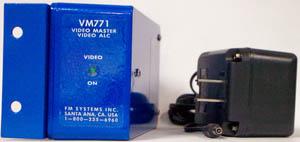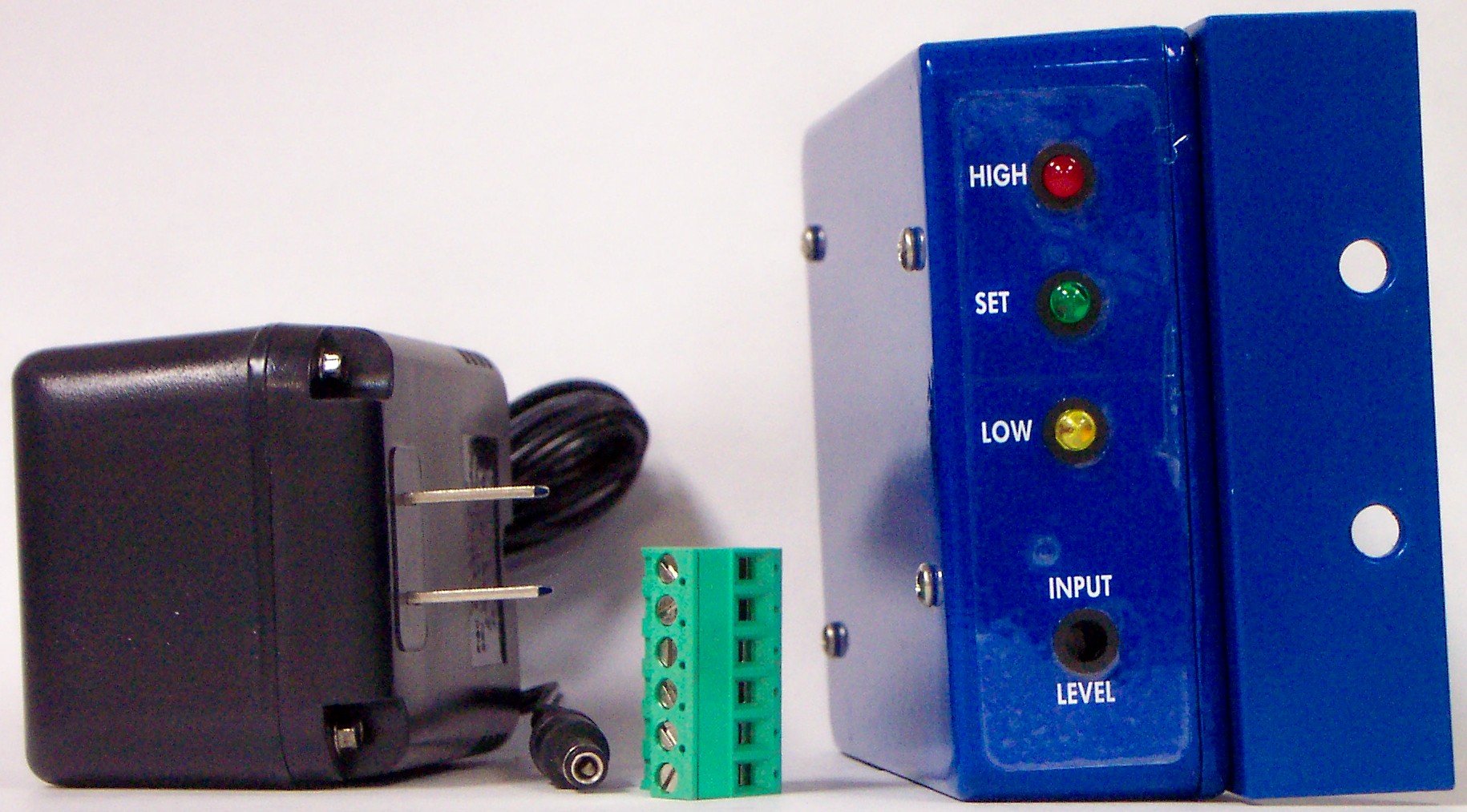PUBLIC ACCESS IN THE DIGITAL AGE
By Don McClatchie
As the conversion from analog to digital television continues in both the broadcast TV and cable TV industries there are many new problems to solve. This article discusses issues related to public access, the program interface and how to guarantee that audio and video signal standards are maintained so that the digital equipment does not fail to encode the signal.
Almost all cable TV companies have an agreement with the local municipalities to allow for some degree of local access. Usually one or more channels are made available for the insertion of local programming, and similarly at times in the broadcasting industry outside programming will be run to satisfy local rules and regulations.
This programming often comes in many different formats such as VHS tapes, DVD discs, and even the old Beta format tapes. All these different formats have one thing in common, they were recorded on various machines outside of your control and almost certainly the recorders are of dubious quality with no maintenance or quality control of any kind. So it is vary likely that the audio and video materials that you receive for public access will vary wildly from normal standards.
This was less of a problem back when analog NTSC modulators were used to deliver the signal. These modulators were less sensitive to low and high video levels and if the video luminance level got a little high the audio would buzz to let you know you were over modulating the signal. If the audio level got too high you would here it in the programming and know you were clipping the signal.
Unfortunately digital video equipment is very sensitive to high levels of video. As an example in most digital video equipment the head-room for a video signal is about 20% over level. This includes any fast transients or overshoots and any level above this can be considered an “illegal” level and many machines will just lock up, go to a blue screen or freeze frame the image and that brings your programming to an end or at the least tears it up a bit. This interruption is especially unfortunate because the people who watch this kind of programming are likely to complain loudly. It is true that not too many people watch the public access programming, but the ones that do can make a loud complaint.
The video levels from public access sources must be regulated and controlled so as to meet the NTSC standards for SYNC level (40 IRE units), Luminance Level (not to exceed 100 IRE units), Color-burst (40 IRE units), Chrominance (color saturation up to 40 IRE units), and video timing of the SYNC pulse train including the vertical interval. Because the digital equipment is so intolerant of high level video care must be taken to insure that the video overshoots are not allowed through. Video overshoots are commonly created by video titling equipment and video overlay equipment.
There is also the problem of ground loop interference that at its worst can cause “hum bars” and at lower levels can cause failure of the digital equipment video lock. This you can see by a regular loss of lock of the digital equipment that appears to make the signal come and go in one or two second intervals.
Video timing problems can come from many sources and cause an array of problems. Most digital equipment has a low threshold for abnormalities in the SYNC train of a video signal. Irregularities caused by VHS tape head switching errors, tape stretch, low frequency response, and excessive video tilt to name a few can contribute to problems in the digital equipment. Perhaps the most obvious of these level problems can be heard in the audio level.
The ideal scene is to have public access audio levels match your system standards for loudness and if you can keep them within a couple of dB of your in house levels there is no problem. Unfortunately audio levels can get pretty wild coming from outside sources and to make it worse the programming will change levels during the run and may have to be adjusted many times during the programming. The different levels found in public access programming have been known to vary as much as 18 dB from one tape to another and as much as 10 dB during the programming. A loud increase in the audio listening level of any program can cause “ACCOUSTIC SHOCK” which is vary unsettling and can bring about complaints from the viewers.
Also it should be noted that the United States Senate has passed “S.2847” the “CALM” act that will regulate the loudness of programming in an attempt to rain-in these out of control audio levels. So the problem is that the material submitted to you for public access is uncontrolled and of a lesser quality than you would like to have and fixing the material is time consuming and requires a great deal of equipment. Well, there is another way to control these levels of video and audio without the need to expend time to edit out the level and timing problems. There are basically three things that must be done, fix the audio levels automatically so that no person needs to listen to the audio tracks and manually correct for the variations.
The second is to automatically control the video levels to return them to the NTSC standards before you digitize the signal for transmission. The third is to fix any abnormalities in the video timing of the SYNC signal. There is a device called the VM771 Video Level Master that will correct all the video level problems and return the analog video signal to NTSC standards automatically. It will correct for low or high SYNC pulse amplitude, control the luminance level to prevent it from exceeding 100 IRE units, it will restore the color burst amplitude to 40 IRE units and also return the Chrominance to its correct level, and the system has a video clamp to restore the DC component of the video signal that clamps out 60 Hz ground loop interference.

The VIDEO MASTER will automatically raise or lower the Sync Pulse level to 40 I.R.E. units. White level is automatically gain-regulated so as not to exceed 100 IRE Units (but still permits a fade to Black). White level is not clipped, but retains a linear gray scale. Luminance-to-Chrominance ratio is automatically corrected compensating for cable slope loss or other sources of high frequency attenuation. Back Porch Clamping eliminates all incoming low frequency interference such as 60 cycle ground loops. Since VM771 processes sync and picture peak voltages through a time-gated Automatic Level Control System, the time relationships within a video signal remain unaffected. Therefore horizontal Sync, Color Burst Timing, and Chrominance Phase retain their original relationship.
The ALM771 AUDIO LEVEL MASTER regulates audio program level so that the sound volume as perceived by the human ear will be consistent, even when the source program material differs in amplitude by as much as 30dB. This 1000:1 input power variation is corrected to within 0.5dB of the desired audio level.Each ALM771 regulates the audio power level of one monaural channel. Two ALM771 modules can be connected together with a control jumper wire to enable them to be operated in synchronism to control the level of a Stereo signal.

The control system is program-dependent and is designed to minimize audible artifacts such as pumping, ducking on loud transients, or noise rush-up in pauses. This allows the audio Level Master to control the audio level without adding a sound of its own. The noise gate freezes the audio gain when the audio level subsides to prevent an increase of noise when the program is quiet. The unit controls the audio level without audible compression artifacts, so you get program audio that sounds natural without the annoying level variations.
Both of these units are available in a rack mount version to solve your audio and video level control issues. Now that the public access level variations have been solved the only thing left to fix is the video timing. The video timing can be fixed by using any number of low cost Time Base Correctors or TBCs. As an example one such TBC is called the TBC-1000. It is a small packaged well functioning TBC that will correct the timing issues associated with variable sourced video. When assembling the system it is important to put the audio and video gain control ahead of the TBC to allow the video AGC to use the existing SYNC level for control purposes otherwise the TBC will strip off and re-insert the SYNC train and you would loose that key for level control.
When it becomes necessary for you to digitize your video and audio programing be careful when using outside sources. If you are receiving program source material by tape or DVD filter them through audio and video gain control and then correct the timing with a TBC before you digitize the signal for your server. If you do this you will always have well controlled and reliable programming to choose from.


